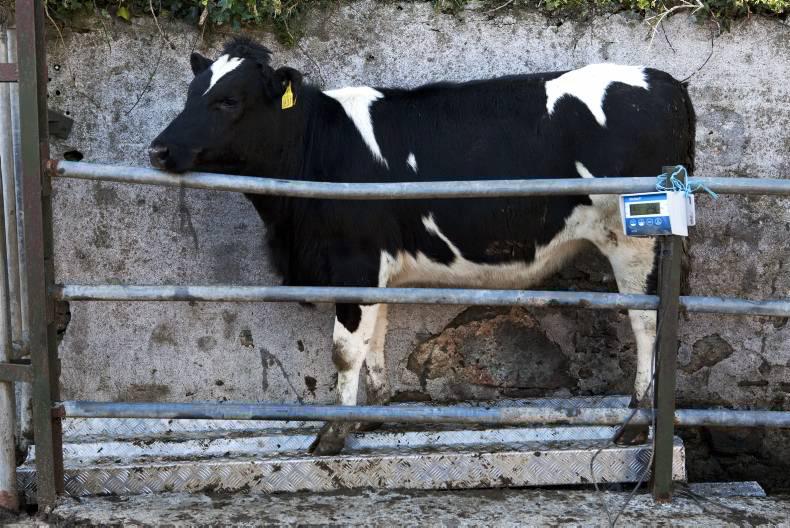With half the 2017 calendar year now gone, this series will look at how project farmers are getting on in relation to targets set at the start of the year for replacement heifers and grass growth.
Replacement heifers on Bill Brown’s farm were weighed at weaning and again at turnout.
The last weighing for the one-year-olds and younger heifers was on the 20 April this year. Bill has 44 yearling heifers and 31 in-calf, which are due to calve in September-October this year. The herd is Holstein-Friesian, with an average herd weight of over 630kg liveweight.
From the beginning of the project, Bill’s objective has been to reduce the size of the herd and breed a more robust cow capable of reaching the production targets set out. The key drivers for this decision were increased maintenance cost in terms of infertility and veterinary cost and under-utilisation of grazed grass on the farm.
Moving the herd towards predominantly autumn/winter calving is the target for this herd, which has moved from a 60:40 autumn:spring split to a 80:20 split with more milk produced in the autumn and winter months. Bill’s target is a cow that can deliver over 8,000 litres at 4.20% butterfat and 3.40% protein (640kg milk solids/cow/year). He wants to compact the calving profile starting in September right through to the end of December and use this more compact profile to help identify infertile cows which will fall outside this window. He is capitalising on the grazing platform available on the farm, with more grazing days and better management of grass throughout the season. The investment into infrastructure will allow him to get more grazed grass into the diet which ultimately will push up the milk produced form forage.
Bill Brown Millisle Co Down
My yearling heifers were weighed on 20 April and at that time average weight was 230kg. My target weight is 370kg at breeding on 25 November for this group of heifers. It means this group needs to achieve 140kg weight gain between 20 April and 25 November, which is 0.6kg/day liveweight gain. On average that is easily achievable on grass only.
The weight range in the group was from 190kg to 260kg. At the last weight check we split the 10 lightest heifers into a group and have given them some extra attention in terms of grass and meal. This group will be weighed again in the first week of July to monitor performance. My objective is to bring this group of heifers into the herd together, so I plan to continue monitoring performance to reach the target breeding weight for all the heifers. Ultimately, this would allow me to breed the heifers in the first month of breeding. For my breeding weight I am looking for 60% of mature cow weight, which equates to 360-370kg liveweight.
Grass growth
Growth last year was 11.5t DM/ha on the farm. With the investment in soil fertility and steady growth so far this year, I hope we can lift this by 1t across the grazing block. May was very dry on the farm and did restrict growth so we never hit the high growth rates usually experienced in May and June on this farm. The new laneways have improved the access to grass on the farm and I wish I had put them in place years ago. Cows are consistently getting 17kg grass DM per day. I moved to 24-hour grazing, and for some paddocks, depending on area, 36-hour grazing, with a fresh strip of grass allocated on the third grazing. The system seems to be working well, with cows very settled at the moment and still doing a good grazing job. In the last week pre-grazing, covers have gone high at 1,800kg/ha in some paddocks, but quality is high in these swards due to pre-cutting the previous rotation. We have moved into the seventh rotation on the block with 4ha skipped for bales this week. The reseeded area has struggled this year. Dry conditions affected establishment, and now weeds have taken over. Broadleaf spray has been on a fortnight and I plan to move the main milking herd in to clean this off this week.
Herd performance
Rolling 12-month herd performance has the herd on target in terms of output, with milk components up on last year due to better grass management. This spring protein has been up 0.15% each month since February. Concentrate input is 2.2t/cow over the past 12 months, and milk from forage at 3,400l/cow. I would like to push this on towards 4,000l but the cow type has to change in order to capitalise on grass without the cost of reduced fertility performance.






 This is a subscriber-only article
This is a subscriber-only article










SHARING OPTIONS: